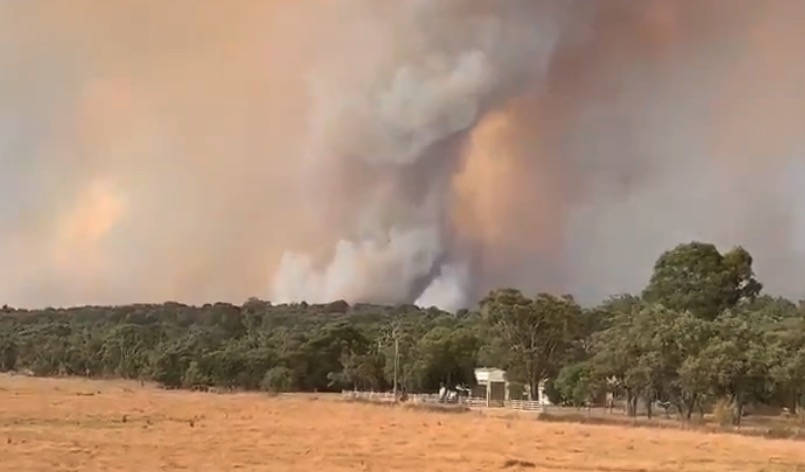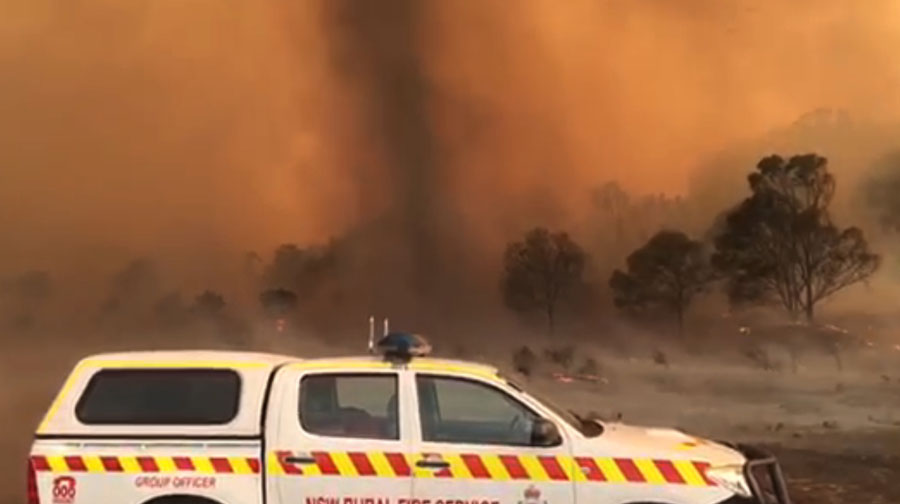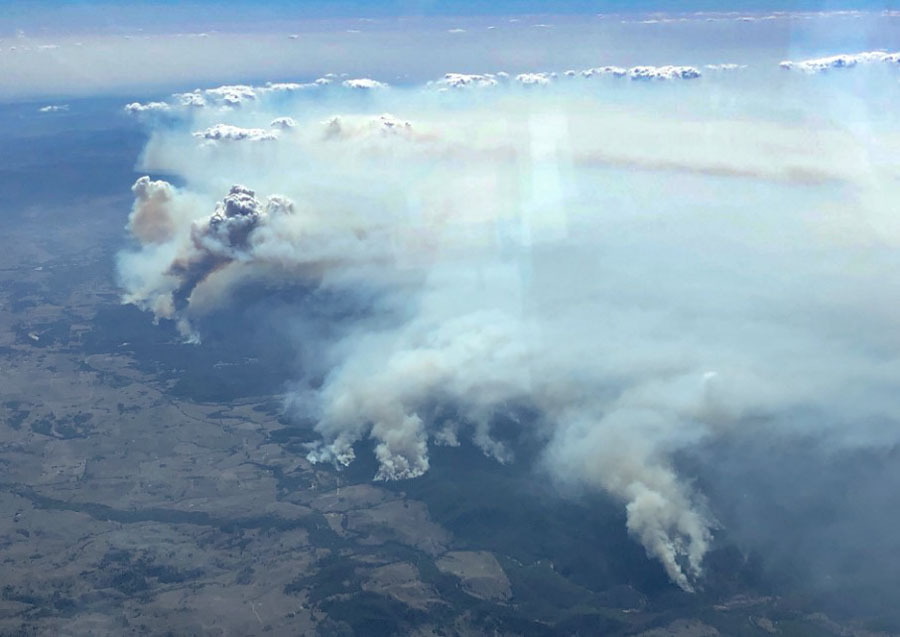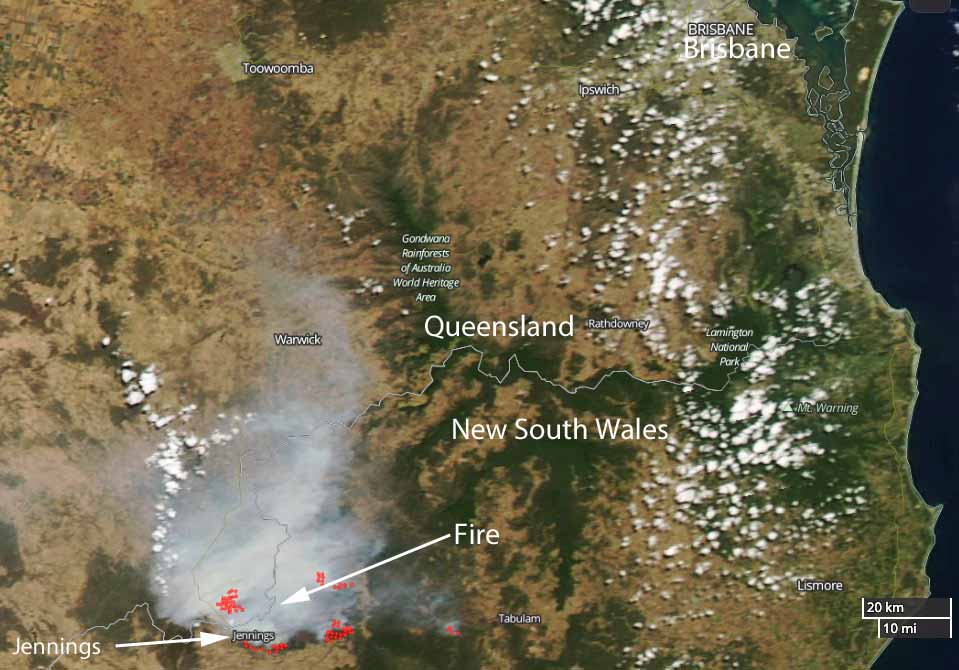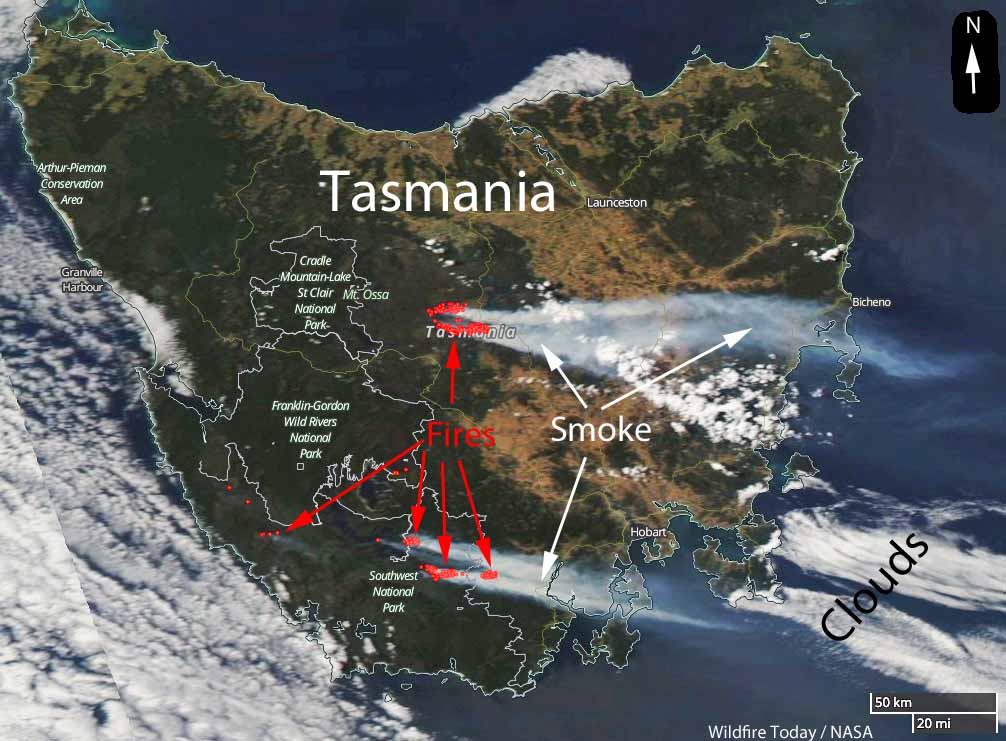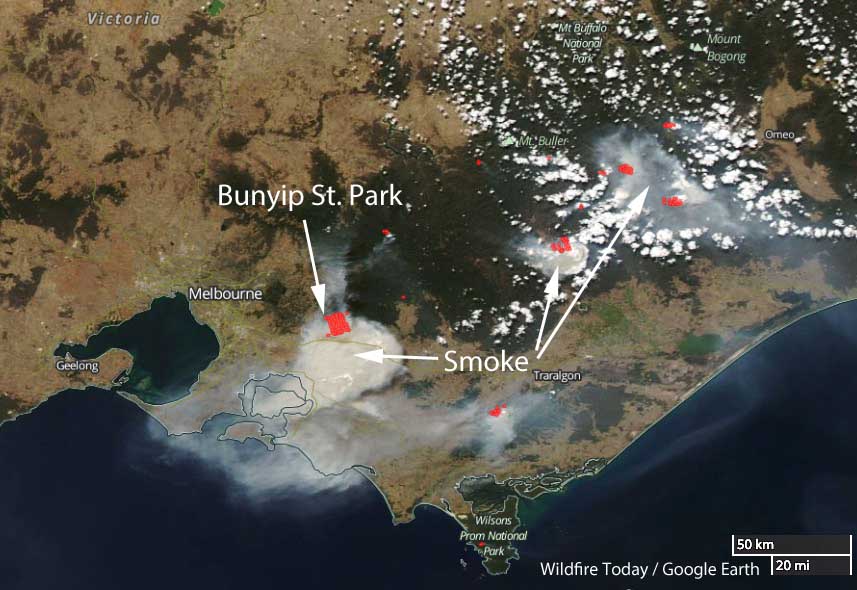
The weather in Victoria, Australia is causing multiple wildfires to spread rapidly endangering residents in some areas east of Melbourne. Presently there are 25 fires burning in the state. Fifteen of them are in eastern Victoria.
Four fires near Bunyip State Park, near Tonumbik, about 65km east of Melbourne, merged on Saturday into one blaze that has burned 6,280 hectares (15,500 acres) as of Sunday afternoon local time.
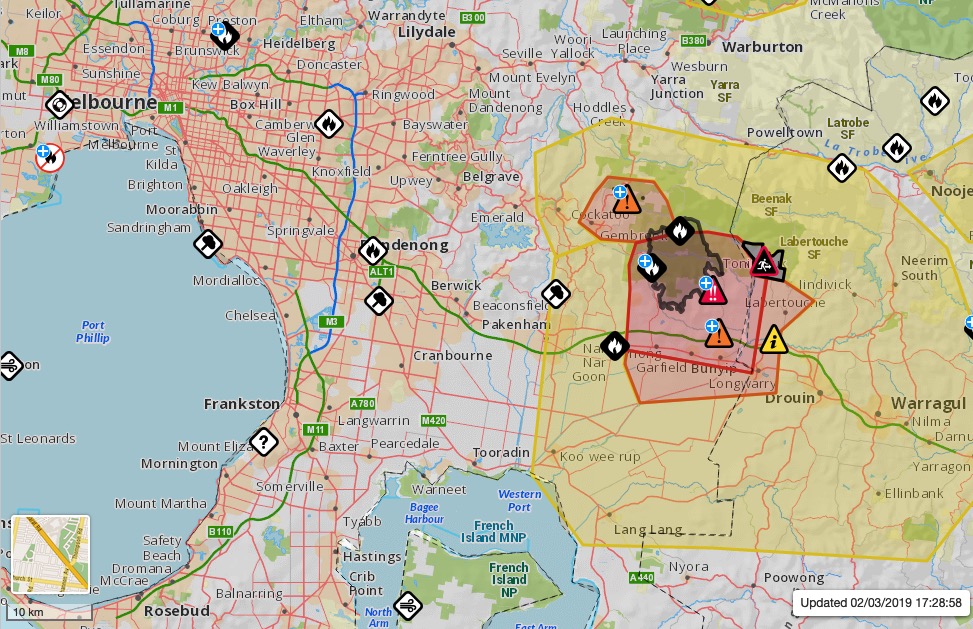
Officials warn that the fire in the state park is expected, after a wind shift, to move closer to Labertouche North and warned residents to be prepared to evacuate. Three homes have been destroyed in the fire so far.
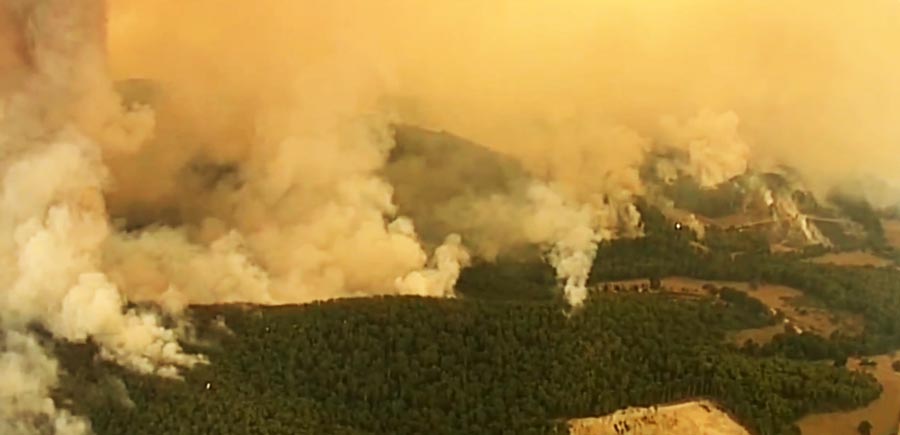
At least one night-flying helicopter dropped water on the fire Saturday night until 3 a.m. local time. About 850 people, 120 fire trucks, and 20 aircraft will be working on the state park blaze Sunday.
Friend of a friend flying past the Bunyip State Park fire east of Melbourne today. 3rd day of 38°C in a row. Forecast says another 24 hrs before some relief. Not good…! pic.twitter.com/j42MJhC6jL
— Patrick Baker (@ozdendro) March 2, 2019
View at 4:40pm of The Bunyip State Park fire from the highest point in Pakenham pic.twitter.com/bkaI1UicTf
— Graham H (@GrahamH92357416) March 2, 2019
Bunyip State Park fire: multiple properties have been lost. Emergency warning current. Monitor @vicemergency for updates: https://t.co/Y7X5kFvdEw #vicfires #7News https://t.co/K2aFRvr8WB
— 7 News Melbourne (@7NewsMelbourne) March 2, 2019

